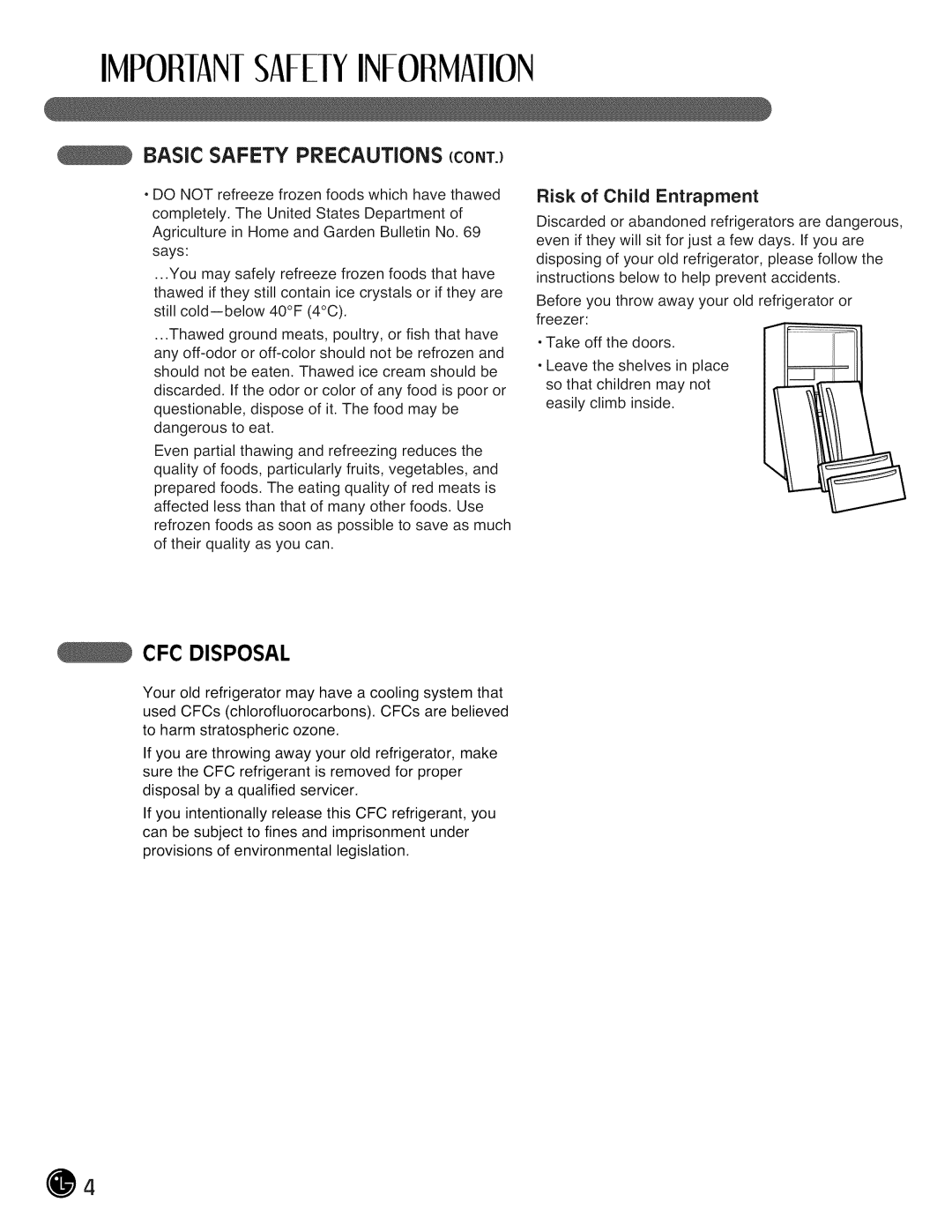
IMPORIAN!SAFELYINFORMATION
BASic SAFETY PREcAUTiONS (cONT.)
DO NOT refreeze frozen foods which have thawed completely. The United States Department of Agriculture in Home and Garden Bulletin No. 69 says:
...You may safely refreeze frozen foods that have thawed if they still contain ice crystals or if they are still
...Thawed ground meats, poultry, or fish that have
any
discarded. If the odor or color of any food is poor or questionable, dispose of it. The food may be dangerous to eat.
Even partial thawing and refreezing reduces the quality of foods, particularly fruits, vegetables, and prepared foods. The eating quality of red meats is affected less than that of many other foods. Use refrozen foods as soon as possible to save as much of their quality as you can.
Risk of Child Entrapment
Discarded or abandoned refrigerators are dangerous, even if they will sit for just a few days. If you are disposing of your old refrigerator, please follow the instructions below to help prevent accidents.
Before you throw away your old refrigerator or freezer:
•Take off the doors.
•Leave the shelves in place so that children may not easily climb inside.
CFC DISPOSAL
Your old refrigerator may have a cooling system that used CFCs (chlorofluorocarbons). CFCs are believed to harm stratospheric ozone.
If you are throwing away your old refrigerator, make sure the CFC refrigerant is removed for proper disposal by a qualified servicer.
If you intentionally release this CFC refrigerant, you can be subject to fines and imprisonment under provisions of environmental legislation.
4
